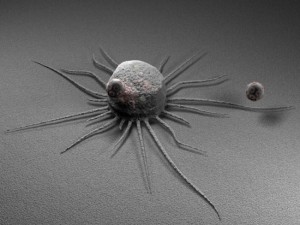The Materials Research Society (MRS) has a Fall 2011 meeting in Boston, Massachusetts scheduled for Nov. 28, 2011 to Dec. 2, 2011, which will feature amongst other exhibits, ‘mibots’. From the Nov. 9, 2011 news item on Azonano,
… new “miBots” from Imina Technologies (Ecublens, Switzerland).
.. are more than nanomanipulators. Unlike conventional systems, they are virtually untethered and move independently. Working individually or in groups, they can be fitted with a variety of tools such as grippers, probes, and optical fibers so that, in addition to manipulating the sample, they can illuminate a nano workspace and conduct force or electrical measurements. Vacuum ready, miBots’ proprietary monolithic structure makes them robust, mechanically and thermally stable, and less sensitive to vibration.
…
Imina Technologies has engineered a variety of stage options for these novel mini robots. For conventional installation on inverted light microscopes (LM), SEMs, or focused-ion beam systems (FIBs), the “miBase” provides control and maneuvering room for up to four miBots. Special apertures accommodate illumination for the LM and stubs for SEMs, and multiple coaxial I/O connections enable electrical characterization and testing.
You can find out more about Imina Technologies and their ‘mibots’ here.
For a completely different kind of bot, a company named Nanobotmodels, situated in the Ukraine, offers illustration, animations, and presentation materials. From the company’s About page,
Our company Nanobotmodels was founded in 2007 and its goal is todevelop modern art-science-technology intersections. Nanotechnology boosts medicine, engineering, biotechnology, electronics soon, so artwork and vision of the nanofuture will be very useful.
We are making hi-end nanotechnology and nanomedicine illustration and animation. You can imagine any interesting-to-you animation, illustration or presentation materials, and we can make them real.
The level of detail in each medical illustration can be used to simplify complex structures and make them visually attractive.
Our clients include the largest medicine photobanks, nanotechnology magazines and publications, educational organization, and private companies.
Company was founded by CEO Svidinenko Yuriy, futurist and nanotechnology artist.
Our team consists of modern artists, modelers and nanotechnology scientists.
Here’s a bit more about the company’s work in medical illustration from a Nov. 11, 2011 news item at Nanotechnology Now,
One heat therapy to destroy cancer tumors using nanoparticles is called AuroShell™. The AuroShell™ nanoparticles circulate through a patient’s bloodstream, exiting where the blood vessels are leaking at the site of cancer tumors. Once the nanoparticles accumulate at the tumor the AuroShell™ nanoparticles are used to concentrate the heat from infrared light to destroy cancer cells with minimal damage to surrounding healthy cells. Nanobotmodels company provides good visual illustration of this process. Nanospectra Biosciences has developed such a treatment using AuroShell™ that has been approved for a pilot trial with human patients.
Gold nanoparticles can absorb different frequencies of light, depending on their shape. Rod-shaped particles absorb light at near-infrared frequency; this light heats the rods but passes harmlessly through human tissue. Sphere-shaped nanoparticles absorb laser radiation and passes harmlessly through human tissue too.
Nanobotmodels Company provides visual illustration of nanoparticle cancer treatment. Our goal – make realistic vision of modern drug delivery technology.
I found this sample on the company’s website gallery,
You can find more artwork here.
Those are all the bots for today.

